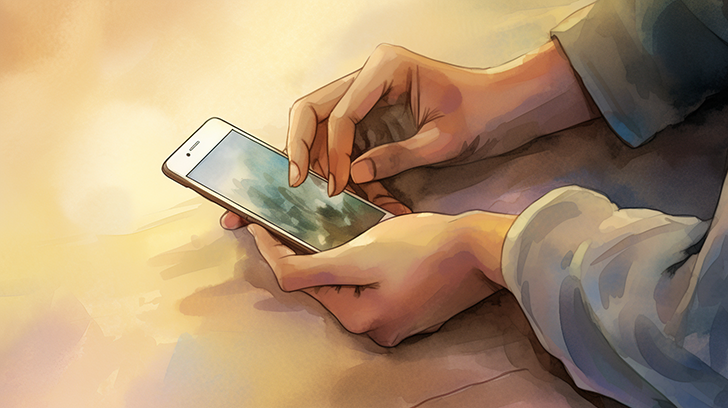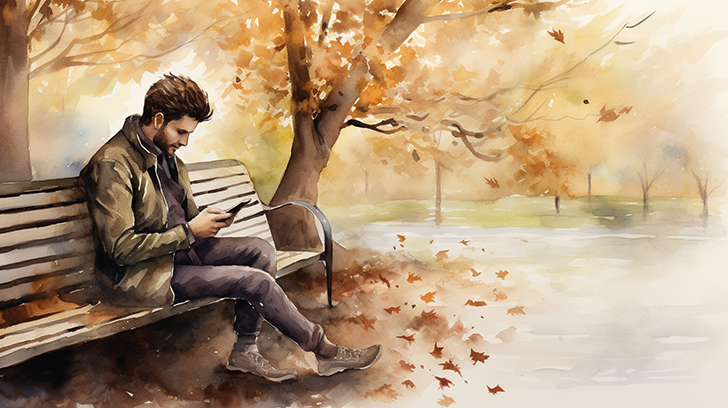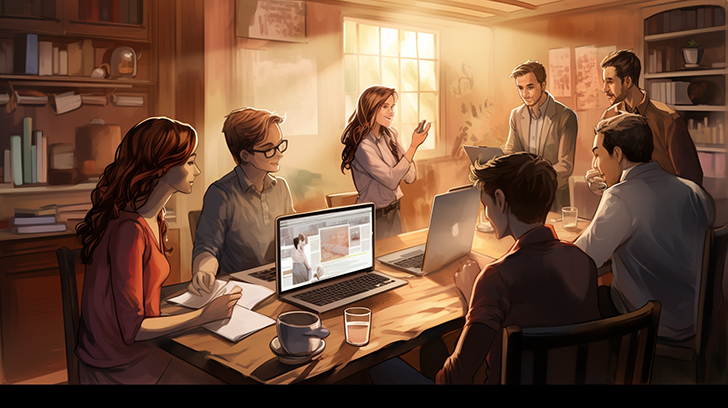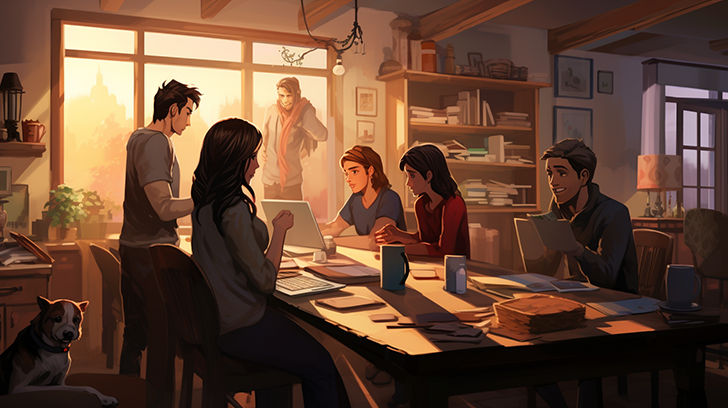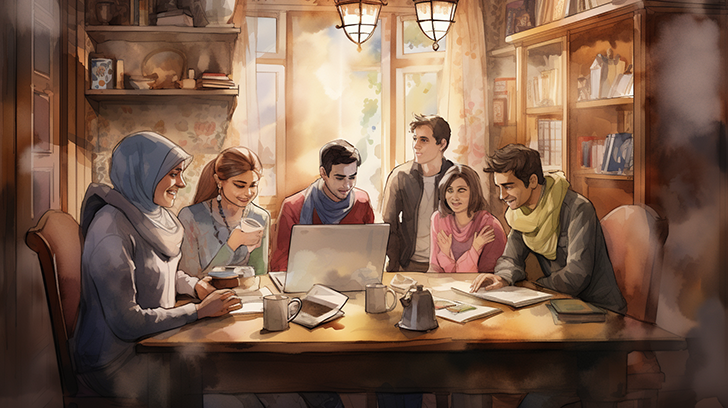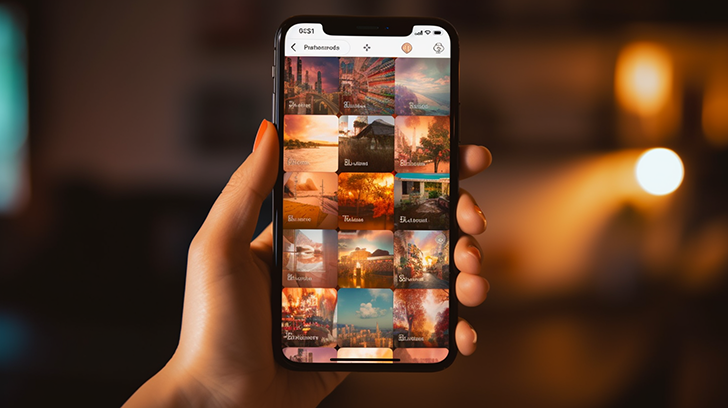- by Tim Thompson
Managing Social Media Accounts After Someone Dies
When a loved one dies, dealing with the digital afterlife, including the management of your loved one’s accounts, is an aspect that is often overlooked. The digital afterlife encompasses the management of online accounts, including social media profiles, email accounts, and other digital assets, after someone passes away. It is a process that involves various steps, from deactivating or deleting accounts to memorialising the deceased person’s online presence.
Introduction
Understanding the Digital Afterlife
The digital afterlife refers to the online presence and accounts on Twitter where they don’t currently allow you to memorialize an account of an individual after their death. This involves managing their presence on social media platforms such as Facebook, Instagram, LinkedIn, and Snapchat, their email accounts and other digital assets, particularly in the scenario of social media after death. The role of managing digital assets, like choosing to close or delete the account of a person who has died has become a crucial part of end-of-life planning and estate management.
Importance of Managing Online Presence After Death
Being an immediate family member, the task of managing the online presence when they die should probably be at the top of your priority list, because this is of paramount importance. It not only respects the privacy and wishes of the deceased but also helps in preventing identity theft, possible misuse of the accounts, and the emotional distress of seeing reminders of the deceased person on social media platforms. It also allows for preserving the digital legacy of the departed individual for their loved ones.
Steps to Take After Someone Dies
Notifying Social Media Platforms
When an immediate family member dies, it’s crucial to notify their social media platforms, like Facebook or Twitter, where they had accounts to prevent misuse and protect the privacy of the person. This could involve contacting the platforms directly and providing them with necessary information such as proof of your relationship, the deceased person’s name, user ID, and a copy of the death certificate to deactivate an account. When someone you love passes away, the account manager must notify social media platforms like Facebook about the death. This ensures that a lawful representative can make changes to their media accounts when they die, managing them according to their wishes, thereby preventing unauthorized access.
Dealing with decisions like Account Deactivation, Memorialization, and choosing whether to delete or close the account of the deceased on a social media site or have the account deactivated after six months of inactivity are important considerations.
After notifying the social media platforms, the next step is to deactivate or memorialize the accounts of the deceased individual, knowing that Twitter doesn’t currently allow you to memorialise the accounts. Many social media platforms offer the option to memorialize the account, which allows friends and family to share memories and condolences while limiting certain features to protect the privacy of the deceased person. To manage this, you, as the account manager or an immediate family member, may need to provide proof of your relationship with the deceased, a copy of the death certificate, and a copy of your ID.
Accessing and managing Digital Assets and Accounts after a period when a person has died is a necessary task, often for the account manager.
Accessing and overseeing the digital assets and media accounts, including cases where Twitter doesn’t allow you to memorialize, of a deceased immediate family member is a significant step in handling their online presence after their death. This may include accessing email accounts, digital files, which the account manager handles, and other online assets that hold sentimental or financial value. Depending on the platform’s policies, the next of kin or an appointed representative may need to provide proof of their relationship to the deceased person, along with a copy of the death certificate, to gain access to these digital assets and accounts.
Handling Specific Social Media Platforms
Dealing with Facebook Accounts and understanding that Twitter doesn’t currently allow you to memorialise an account is crucial after a loved one’s passing.
When dealing with social media after death, the first step is to notify the social media site like Facebook or Twitter, about the deceased individual’s passing, and either close the account or let it deactivate after six months of inactivity. This can be done by submitting a request to Facebook and providing the necessary information, including the deceased person’s name, user ID, and a copy of the death certificate. Upon receiving the notification of death, the social media site can memorialize the account, hitting a balance between sharing memories and restricting certain account features to protect the person’s privacy. Alternatively, the account can be deleted if preferred by the family or next of kin.
Managing Instagram and Snapchat Accounts when dealing with death is similar. As a representative of the deceased person, provide proof of the death and your relationship to the service provider.
In a scenario such as someone’s passing, notifying social media sites like Instagram and Snapchat, similar to Facebook, becomes crucial. Each platform has different procedures for a lawful representative of the deceased to handle accounts after a user’s death. Instagram, as a social media platform, allows accounts to be memorialized when dealing with social media after death, whereas Snapchat provides the lawful representative with the option to either close or deactivate the account. Close friends or immediate family members can submit a request to these platforms, providing proof of death, to make necessary arrangements for the loved one’s accounts.
Deactivating LinkedIn and Email Accounts
Managing professional platforms like LinkedIn and the personal email accounts of someone who has passed away requires a unique approach. For LinkedIn, a platform where you probably want to decide to deactivate, the account can be done by submitting a request and providing proof of the individual’s passing. Similarly, an immediate family member or an authorized representative can contact the email service provider, providing a copy of the death certificate and proof of their relationship, to deactivate or close the deceased person’s email account.
Ensuring a Digital Legacy
When someone passes away, their digital legacy becomes an important aspect that requires careful consideration and planning. For immediate family members, ensuring a digital legacy involves steps like choosing to leave or close accounts which ensures preservation of memories and digital content for future generations.
Writing a Social Media Will
Drafting a social media will involve documenting your wishes about how to handle your online accounts, such as whether to delete your loved one’s account or leave them active, after your death. This document can include details about which accounts should be deleted, memorialized, or left active, as well as appointing a trusted individual as a legacy contact to manage your social media accounts according to your preferences.
Designating a Digital Executor
Designating a digital executor involves appointing someone to carry out your digital wishes after your death, who might have to close the account if Twitter doesn’t allow account memorialisation. This person can be responsible for managing and executing your social media will, accessing and handling your digital assets and online accounts, and ensuring that your digital legacy is preserved and managed according to your instructions.
Preserving Memories and Digital Content
Preserving the memories and digital content of the deceased involves steps like turning off Facebook birthday reminders, and ensuring to safeguard their digital legacy through requests to delete or choose to leave it open-based options. This may include creating backups of digital files, organizing and storing digital content securely, and ensuring that it can be accessed and shared by the deceased person’s loved ones.
Conclusion
In today’s digital age, coping with social media accounts after a period of someone’s death holds paramount importance for account managers; especially if it involves deciding a loved one’s accounts on platforms like Twitter that currently doesn’t provide full control. The management of online presence after a person has died ensures respect for the deceased’s wishes and privacy, which may involve decisions to delete or close the account. By planning and handling the digital legacy with care and consideration, we can honour and preserve the online presence of the departed while providing comfort and support to their loved ones.
Importance of Planning for Digital Afterlife
Planning for the digital afterlife is significant as it allows individuals to make decisions regarding the managing of their online accounts and digital assets after their death by an authorized account manager. By considering the preservation and handling of their digital legacy, individuals can ensure that their wishes are respected, their privacy is protected, and their digital presence is managed by their preferences.
Questions from families
How to memorialise social media accounts
To memorialize social media accounts, such as a loved one’s accounts, you’ll need to follow the procedures and contact the respective social media platform to submit a request to delete or deactivate an account. Each has its own process. For example, Facebook and Instagram allow accounts to be memorialized, turning them into a space for friends and family to share memories. You’ll typically need to provide proof of death, such as a death certificate.
How to manage a Snapchat account after death
To manage a Snapchat account after the death of someone you love, contact Snapchat’s account manager. You will likely need to provide documentation such as the death certificate and proof of your relationship to the deceased.
How to delete social media accounts when someone dies
To delete social media accounts when someone dies, you must contact each social media platform individually. Each platform has its own procedure for a representative of the deceased person to make changes, usually requiring a form submission along with a copy of the death certificate and proof of authority.
How to deal with a loved one’s Facebook account when they die
To deal with a loved one’s Facebook account after their death, you can either request to have it memorialized or deleted. For both, you’ll need to provide a copy of their death certificate as proof of the death and confirm your relationship to the deceased along with a copy of your ID. Facebook has online forms for these requests.
How to manage an Instagram account after death
An Instagram account can be either memorialized or deleted after the account holder’s death. To request either account closure or memorialization, contact Instagram with proof of death, as a family member or friend having access to the account. To memorialize, you’ll need to provide evidence of the death, like an obituary or death certificate, as a family member or friend with access to the account, although platforms like Twitter don’t currently allow you to memorialise an account.
How to manage a LinkedIn account after death
To manage a LinkedIn account after someone dies, you need to report the death to LinkedIn. This involves filling out a form with information about the deceased and providing a death certificate. Being a representative of the deceased person, your request to LinkedIn will help to close the account.
What happens to online accounts when you die?
When someone has passed, the fate of their online accounts after a period depends on the policies of each service provider. Some accounts on Twitter may remain active until reported and closed by relatives, others may be automatically deactivated after six months of inactivity, depending on the privacy of the person.
Has a loved one passed away?
If a loved one has passed away, it’s important to consider how to handle their digital presence, including social media accounts, email accounts, and online subscriptions. This often involves contacting service providers like Twitter, which doesn’t currently allow you to memorialize an account, to report the death and follow their specific processes for account closure.
Deciding what to do with social media accounts after death
Deciding what to do with social media accounts following death involves considering the wishes of the deceased (if known), dealing with their social media, and understanding the policies of each social media platform. Options typically include leaving the account active, requesting the account to be deleted, or memorializing it.
How to remove a deceased person from social media platforms when they die
To remove a deceased person from social media platforms, contact each platform directly. Each has its own process for handling the accounts of deceased users, usually requiring proof of death and your relationship to the deceased.
How to manage email accounts after death
To manage email accounts after the death of someone you love, contact the account manager at the email service provider. Policies vary, but as the lawful representative of the deceased, you will generally need to provide documentation like a death certificate and proof of your authority to manage their digital assets.
Getting Ready to Close or Change a Social Media Account After Someone Has Died
Getting ready to close or change a social media account after someone has died involves gathering necessary documents (like death certificates), understanding your legal authority, and being familiar with each platform’s policies and procedures for handling the accounts of deceased individuals.
Should you post on social media when someone dies?
Posting on social media when someone has passed is a personal decision, always consider the account to be deleted. It’s important to respect the wishes of the deceased and their family. If you decide to post as you’re an immediate family member and have access, do it respectfully and consider the impact on those who are grieving, ensuring the privacy of the person.
What if I’m the family or friend of someone who has died?
If you’re the family or friend, or a lawful representative of someone who has died, you can submit a request to delete or memorialize their digital accounts. Check each platform’s policy for the required documentation and process.
What happens to social media accounts after people die?
After people die, their social media accounts may remain inactive, be memorialized, or be deleted based on requests from family members or legal representatives, following the specific procedures of each social media platform.
How do I close a social media account for a deceased person?
To close a social media account for a deceased person, a family member or friend could contact the specific platform, provide a copy of the death certificate, and complete any required forms to gain access to the account. Each platform has its procedure for handling such requests.
How do you handle accounts after death?
Handling accounts after death involves contacting each service provider, providing a death certificate and proof of your relationship or authority, and following their specific process for closing or memorializing the account.
What to do with digital accounts when someone dies?
When someone dies, their digital accounts can either be closed or memorialized. You need to contact each service provider, provide the necessary documentation, and follow their specific guidelines for handling the accounts of deceased users.
What happens to Internet accounts when someone dies?
When someone dies, Internet accounts may become inactive. The family or legal representatives can contact the service providers to inform them of the death and follow their procedures to either close or memorialize the accounts.
What happens to online bank accounts when someone dies?
Online bank accounts need to be handled by the executor or next of kin. This involves contacting the bank with a death certificate and other required legal documents. The bank will guide you through the process of closing the account and managing any remaining funds.
How to close social media accounts after death
To close social media accounts after death, contact each social media platform individually, provide a death certificate, and complete any necessary forms or processes they require.
Can you ask sites to delete accounts or take them down?
Yes, you can ask sites to delete accounts or take them down following the death of an account holder. You’ll need to provide documentation like a death certificate and proof of your relationship to the deceased.
Curious about what happens to your social media accounts when you die?
When you die, your social media accounts can either be left inactive, memorialized, or deleted, based on the policies of each platform and the actions taken by your family or legal representatives.
How to manage a WhatsApp account after death?
WhatsApp accounts do not have a specific process for memorialization. These accounts generally get deactivated due to inactivity over time, or the family can contact WhatsApp for closure with the necessary documentation.
Should you “memorialize” them?
Whether to memorialize a social media account is a personal decision which you can make as a lawful representative of the deceased person with the authority to make changes. It allows a space for friends and family to remember and share memories, but it’s important to consider the wishes of the deceased and their family.
Should you really post on social media when someone dies?
Posting on social media when someone dies should be done with sensitivity and respect for the deceased and their family. As the account manager, consider the impact of your post on the grieving process after someone has passed and respect privacy preferences.
What can a person to do organise their digital legacy?
To organize their digital legacy, which should be at the top of your priority list, a person can keep a record of their digital accounts and instructions for handling them after their death. This can be part of a will or shared with a trusted individual, who may probably want to make changes to their digital assets.
What if I am the family or friend of someone who has died?
If you’re the family or friend of someone who has died, you can take steps to manage their digital legacy by contacting the relevant service providers, providing necessary documentation, and following their procedures for account closure or memorialization.
Who can contact Facebook, and what happens?
Any immediate family member or executor can contact Facebook to either memorialize or delete the account of someone who has died. They need to provide proof of death and their relationship to the deceased.
Who can contact LinkedIn, and what happens?
To contact LinkedIn about a deceased member’s account, you need to fill out a form on their website with details about the deceased. LinkedIn will then work to verify the information and proceed to close the account.
Who can contact Snapchat, and what happens?
Family members or legal representatives can contact Snapchat with the required documentation, such as a death certificate, to manage the account of a deceased person. Snapchat will then guide the family member or friend through the process, which typically involves closing the account after six months of inactivity?
Why Do You Need to Deal with Your Loved One’s Social Media Accounts After Their Death?
Dealing with a loved one’s social media accounts after their death is important for several reasons: it helps protect their digital legacy, prevents identity theft, and creates a space for friends and family to remember and share memories.
Respecting the Online Presence of the Deceased
Respecting the online presence of the deceased involves handling their online accounts and digital assets with sensitivity, compassion, and respect. By managing the deceased person’s online presence in a thoughtful and considerate manner, we can honour their memory, comfort their loved ones, and preserve their digital legacy in a meaningful and respectful way.





